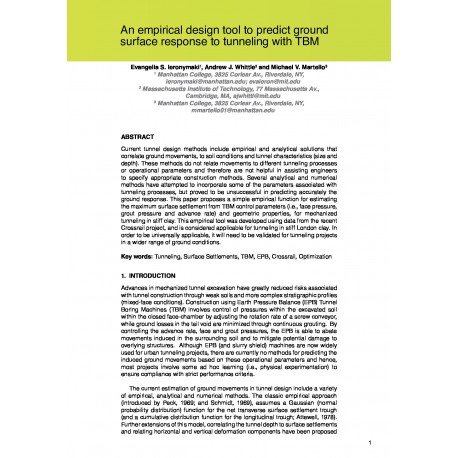Cart
0
0
No document
0,00 €
Total
Document successfully added to your shopping cart
Quantity
Total
There are 0 items in your cart.
There is 1 item in your cart.
Total documents
Total shipping
To be determined
Total
Search & filter
Search for a publication
Search & filter

An empirical design tool to predict ground surface response to tunneling with TBM
1377_an_empirical_design_tool_to
E. S. Ieronymaki / A. J. Whittle / M. V. Martello
Current tunnel design methods include empirical and analytical solutions that correlate ground movements, to soil conditions and tunnel characteristics (size and depth). These methods do not relate movements to different tunneling processes or operational parameters and therefore are not helpful in assisting engineers to specify appropriate construction methods. Several analytical and numerical methods have attempted to incorporate some of the parameters associated with tunneling processes, but proved to be unsuccessful in predicting accurately the ground response. This paper proposes a simple empirical function for estimating the maximum surface settlement from TBM control parameters (i.e., face pressure, grout pressure and advance rate) and geometric properties, for mechanized tunneling in stiff clay. This empirical tool was developed using data from the recent Crossrail project, and is considered applicable for tunneling in stiff London clay. In order to be universally applicable, it will need to be validated for tunneling projects in a wider range of ground conditions.


